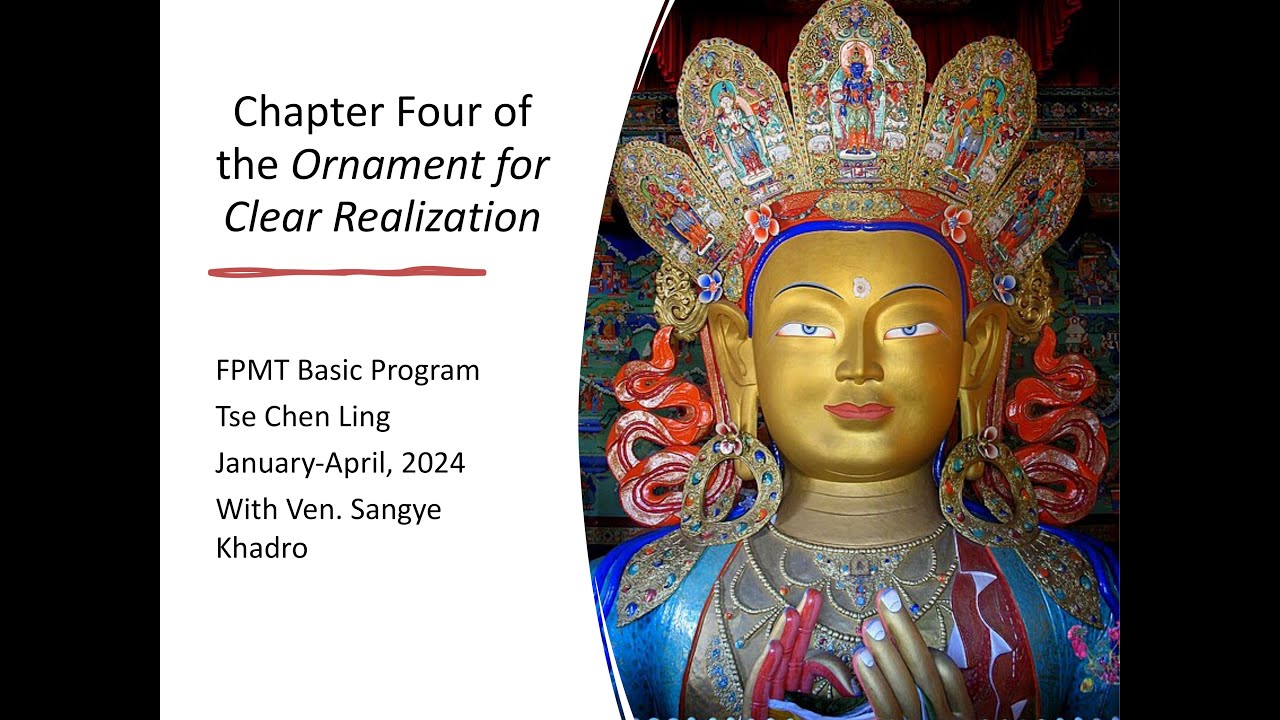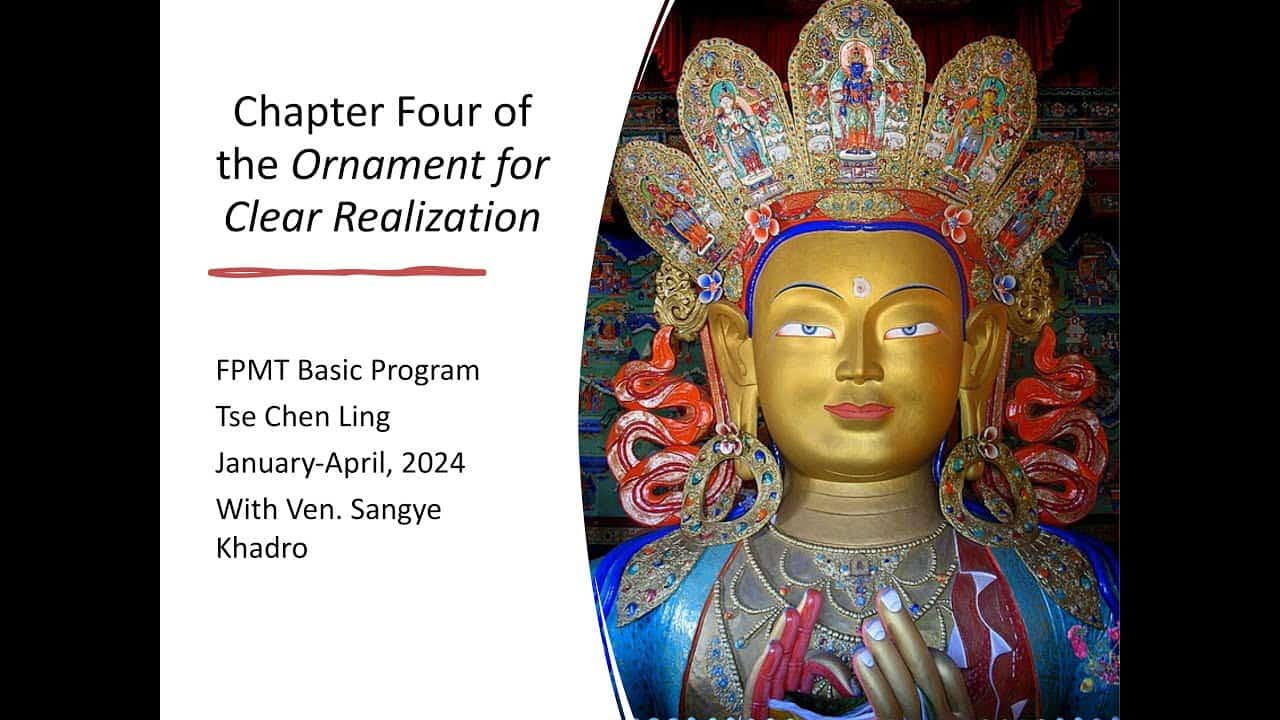Awareness of our buddha nature eliminates hindrances
129 Samsara, Nirvana, and Buddha Nature
Part of an ongoing series of teachings (retreat and Friday) based on the book Samsara, Nirvana, and Buddha Nature, the third volume in The Library of Wisdom and Compassion series by His Holiness the Dalai Lama and Venerable Thubten Chodron.
- Are we already buddhas?
- Explanation of permanent, stable, enduring basis
- Definitive teachings and interpretable teachings
- Three factors to consider while examining the teachings
- Final intended meaning, purpose and logical inconsistencies that would arise
- Emptiness of the mind of buddhas and emptiness of the mind of the sentient beings
- Explanation of buddha nature in the second turning and third turning
- Five factors that hinder us from developing bodhicitta, realizing emptiness and attaining buddhahood
- Discouragement, arrogant contempt for those we consider inferior, distorted conceptions, denigrating the true nature and self-centredness
- Factors we cultivate with the correct understanding
Samsara, Nirvana, and Buddha Nature 129: Awareness of Our Buddha Nature Eliminates Hindrances (download)
Contemplation Points
- Are we already wise buddhas but just don’t know it? Do buddhas have afflictions?
- The Buddha said there is a permanent, stable and enduring buddha nature in each of us. What was his final intended meaning and purpose in saying this? What logical inconsistencies arise from taking statement literally?
- Maitreya explains that the Buddha spoke of buddha nature being the clear light mind in order to help the sentient beings overcome five factors that hinder us from developing bodhicitta: discouragement, arrogant contempt for those we consider inferior, distorted conceptions, denigrating the true nature, and self-centerdness. Spend some time examining each, making examples from your own life of how they hinder bodhicitta. What arises in place of these five faults when we have a deeper understanding of buddha nature?
Venerable Thubten Chodron
Venerable Chodron emphasizes the practical application of Buddha’s teachings in our daily lives and is especially skilled at explaining them in ways easily understood and practiced by Westerners. She is well known for her warm, humorous, and lucid teachings. She was ordained as a Buddhist nun in 1977 by Kyabje Ling Rinpoche in Dharamsala, India, and in 1986 she received bhikshuni (full) ordination in Taiwan. Read her full bio.


